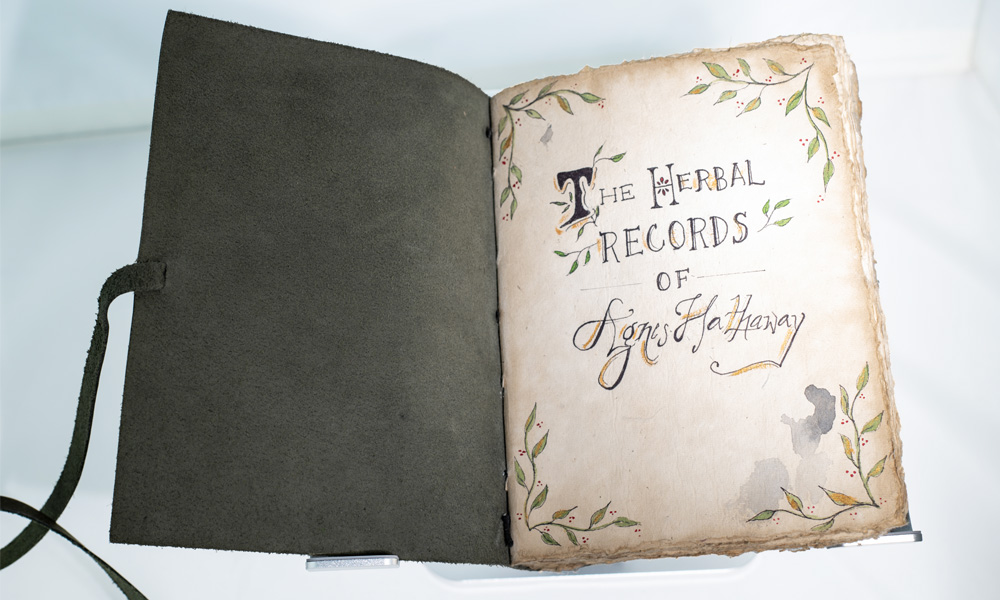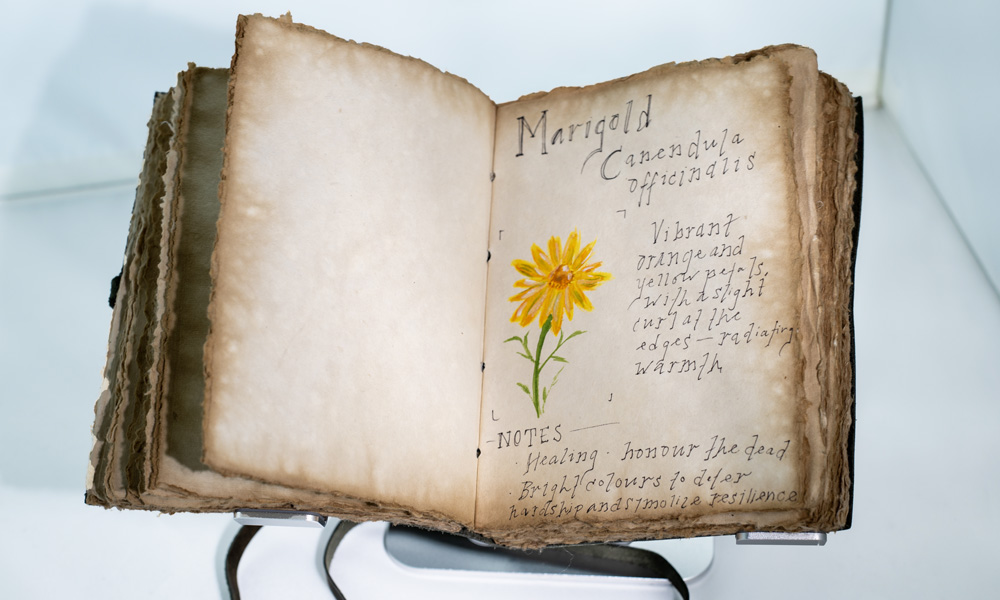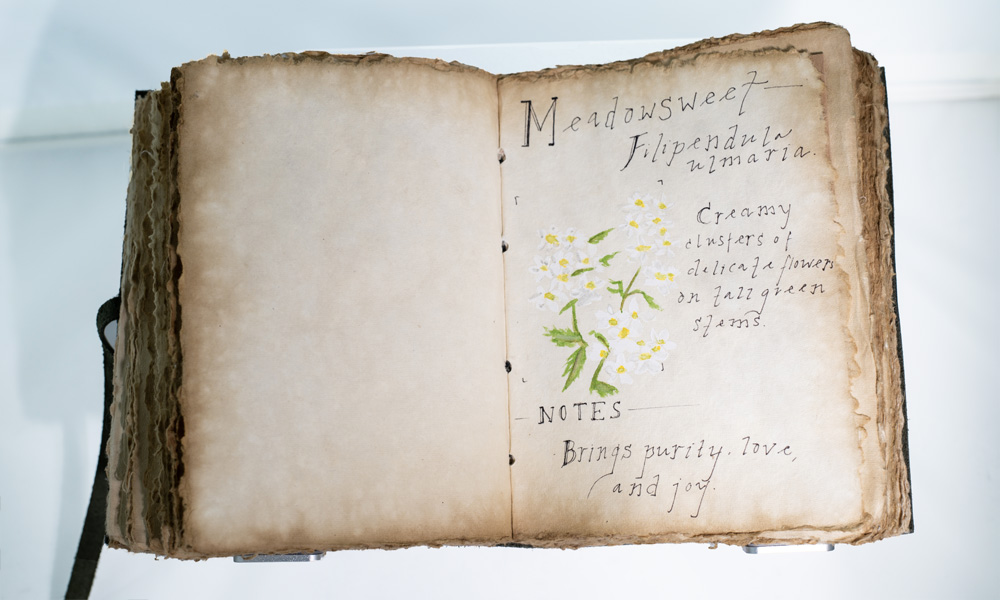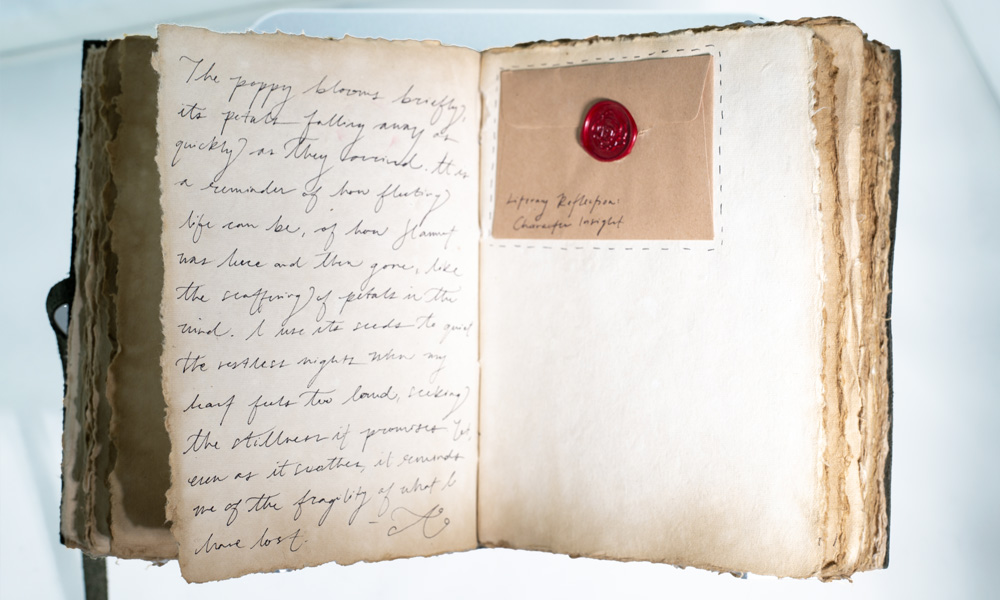
The Herbal Records of Agnes Hathaway, journal created by 4th year English Honour student, Emma Laing
Emma Laing is a fourth-year English honours student, under the supervision of Dr. Michael Treschow, she is researching the fourteenth-century poem Pearl. In this project, she will examine the relationship between human attachment to earthly experiences and the search for divine wisdom, particularly as reflected through the personified figures of Fortune and Wisdom, and will also be referencing Boethius’ Consolation of Philosophy, Geoffrey Chaucer’s The Book of the Duchess, and Julian of Norwich’s Revelations of Divine Love.
“Throughout my studies, I have developed a deep passion for particular areas of literature, and the English honours program has provided both an opportunity and a challenge to explore those areas further.”
In a class with Dr. Jennifer Gustar, students were assigned a research essay, but Emma put in a proposal to undergo a more creative approach. In Maggie O’Farrell’s Hamnet, the character of Agnes fictitiously represents Anne Shakespeare (née Hathaway), Emma says she wanted to further uncover her expansive interiority. “Because of this, I felt the project form needed to be personal, which led me to create a journal as if it were written by Agnes.”
The journal displays her extensive knowledge of herbal medicine and her talent for writing. Each of the herbs or plants included focus on a particular aspect of Agnes’ life and emotions, including protection, love, motherhood, and grief. Alongside the plants, Emma included their scientific names as found in early modern herbals like those by John Gerard and Nicholas Culpeper, as well as journal entries and paintings as if created by Agnes herself, and literary insight into the novel. Everything in the journal was intended to be written by Agnes, and Emma framed her literary analysis into envelopes or kept it separate to make the journal feel more authentic.
Reflecting on this project, Emma says: Many people assume that studying English is solely about essay writing. However, critical research, analysis, and reflection can take many forms. While traditional essays are often the most effective way to express your thoughts and opinions, creative projects like this one can better support certain directions and ideas. Creative research projects are becoming more common in English courses, and for me, working on creative projects allows me to combine my interests – critical analysis, creative writing, art, and in this case, plant medicine – into something I am truly passionate about.
Below are photographs of some of the pages of the journal Emma created for this class.



